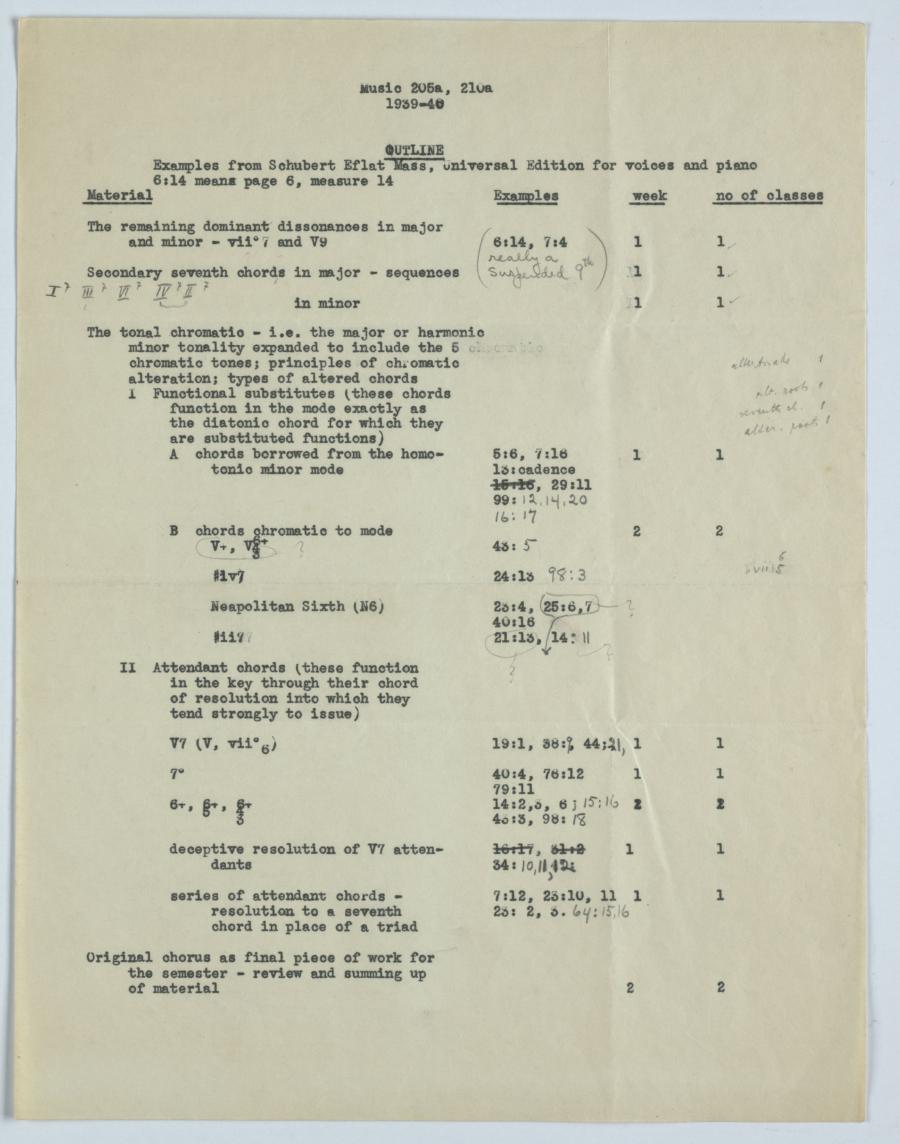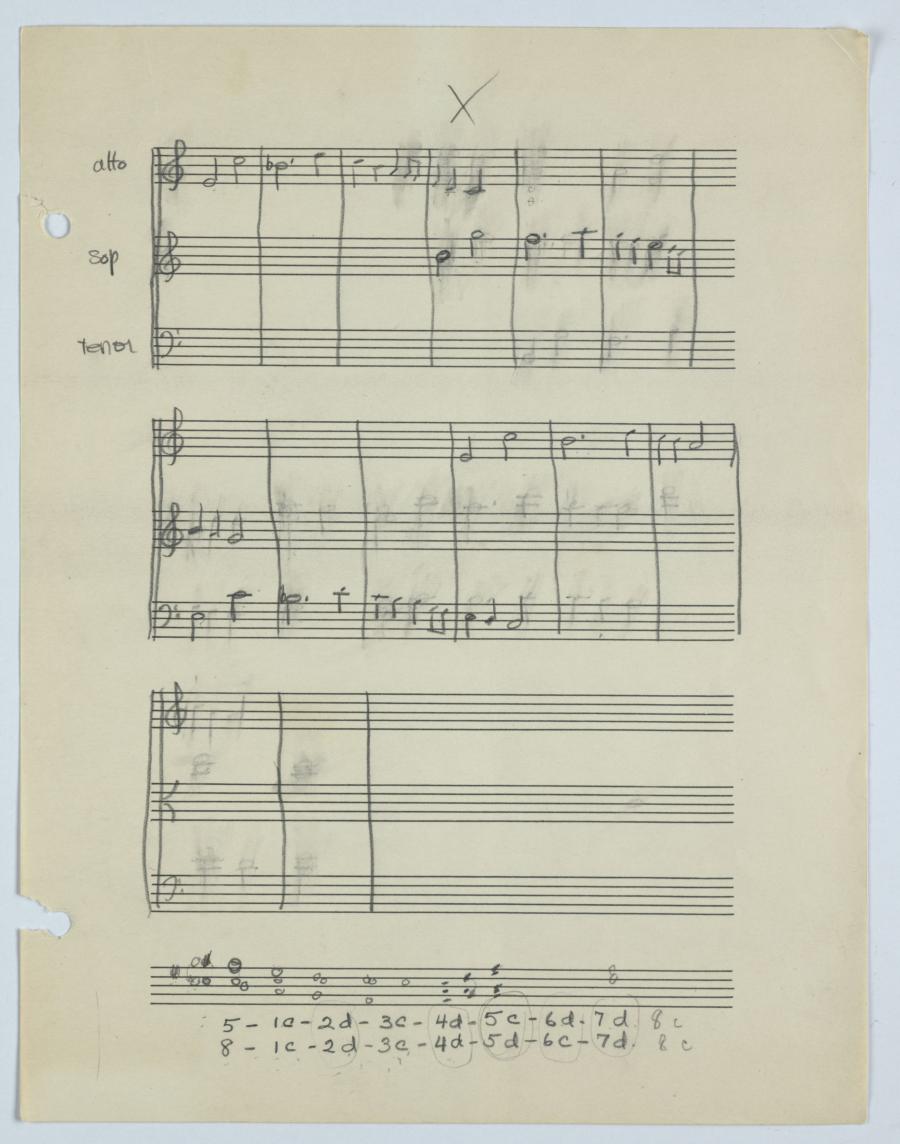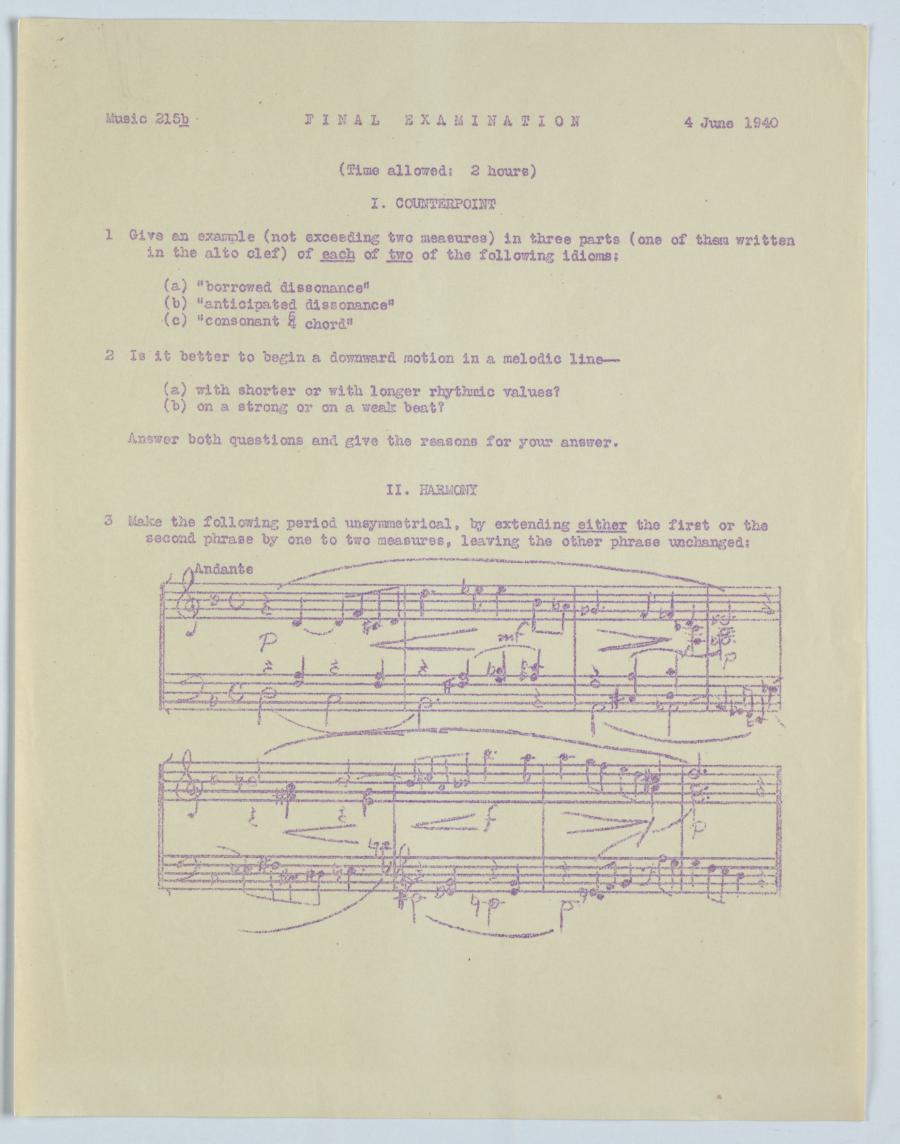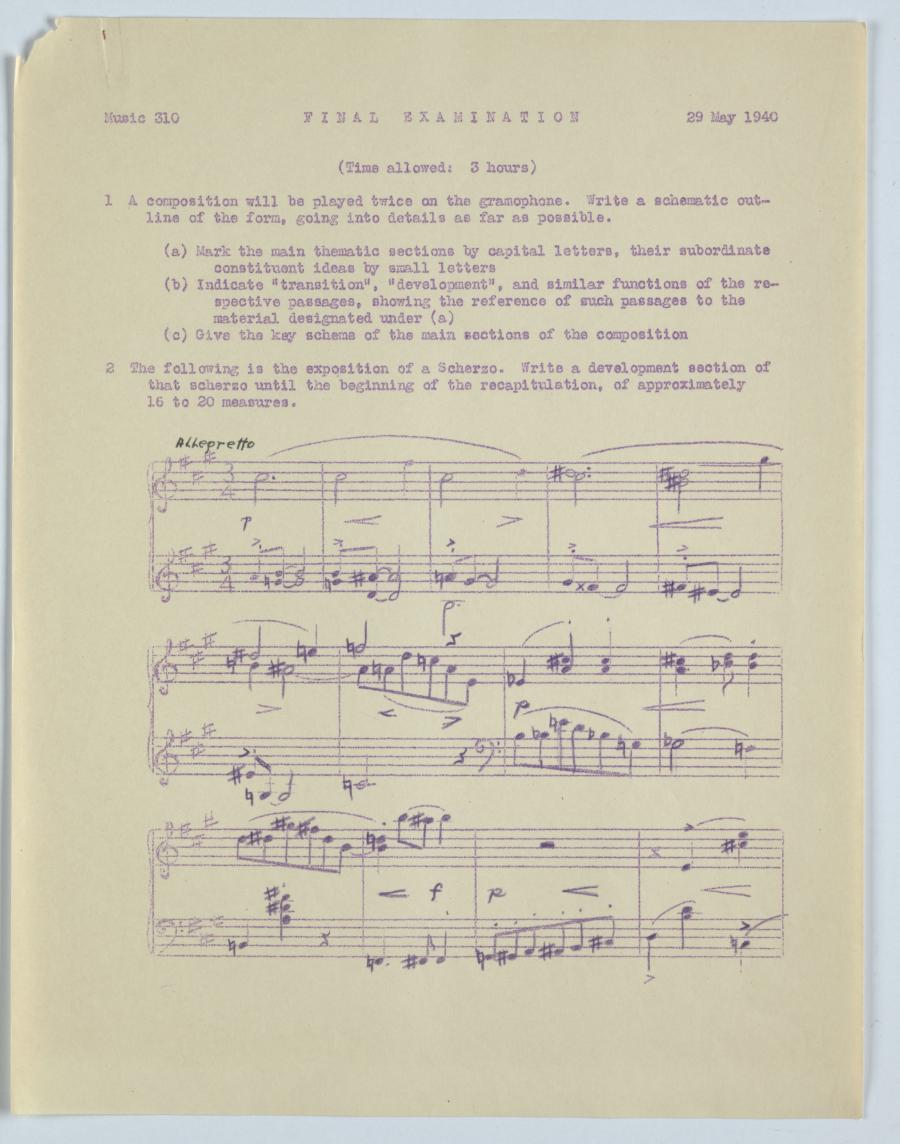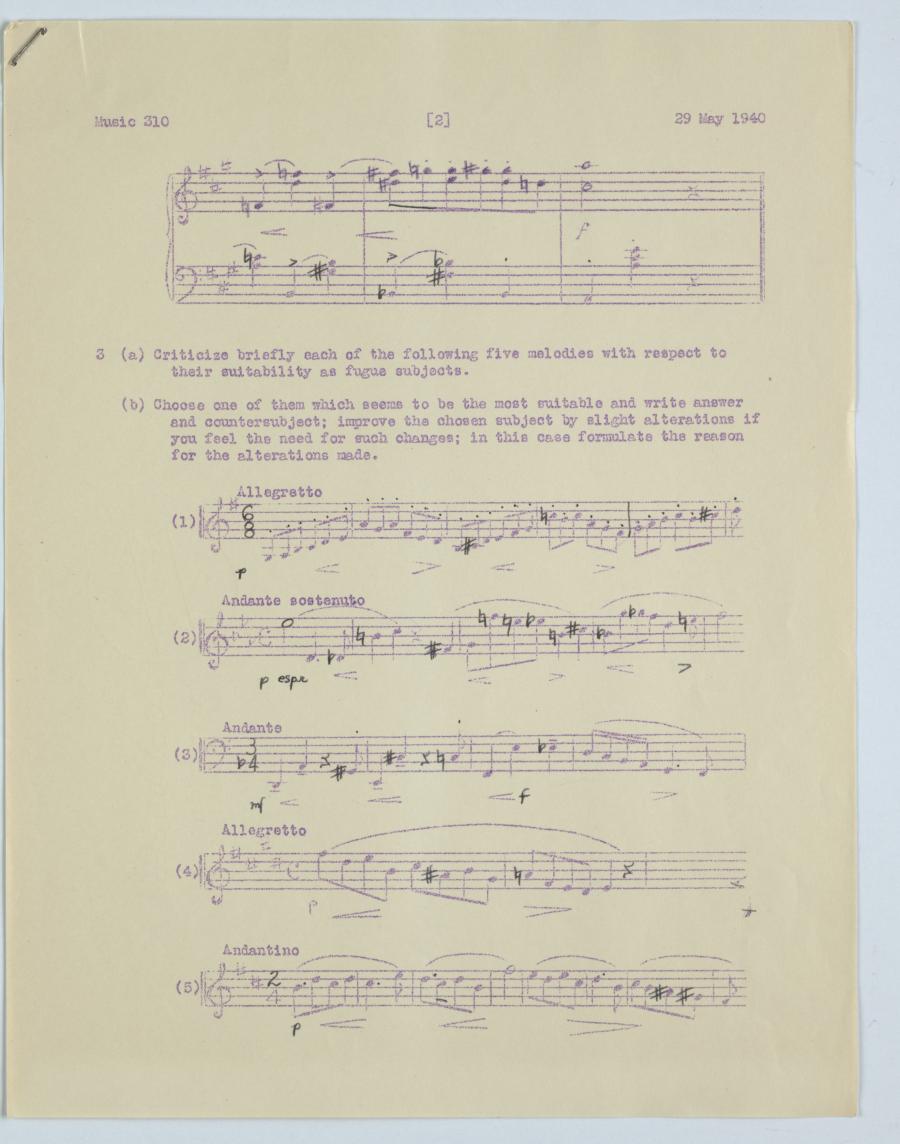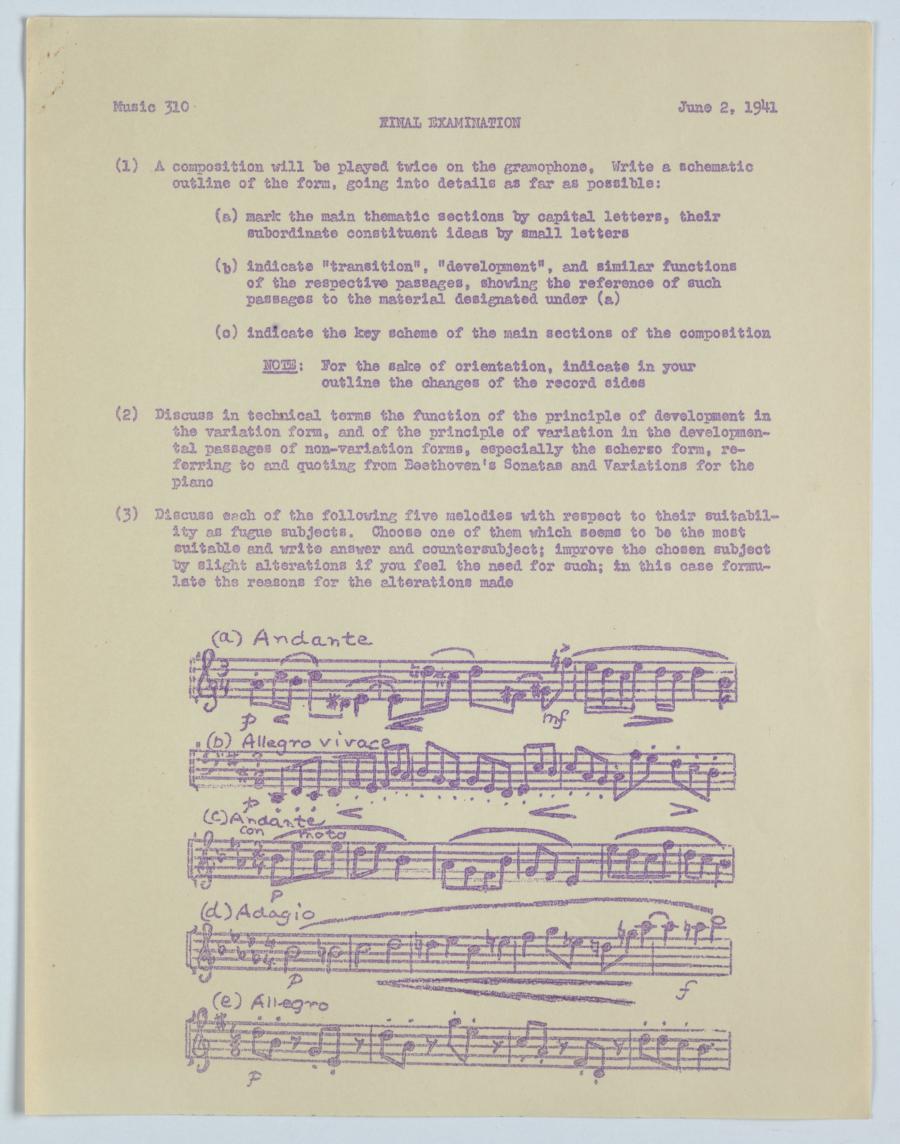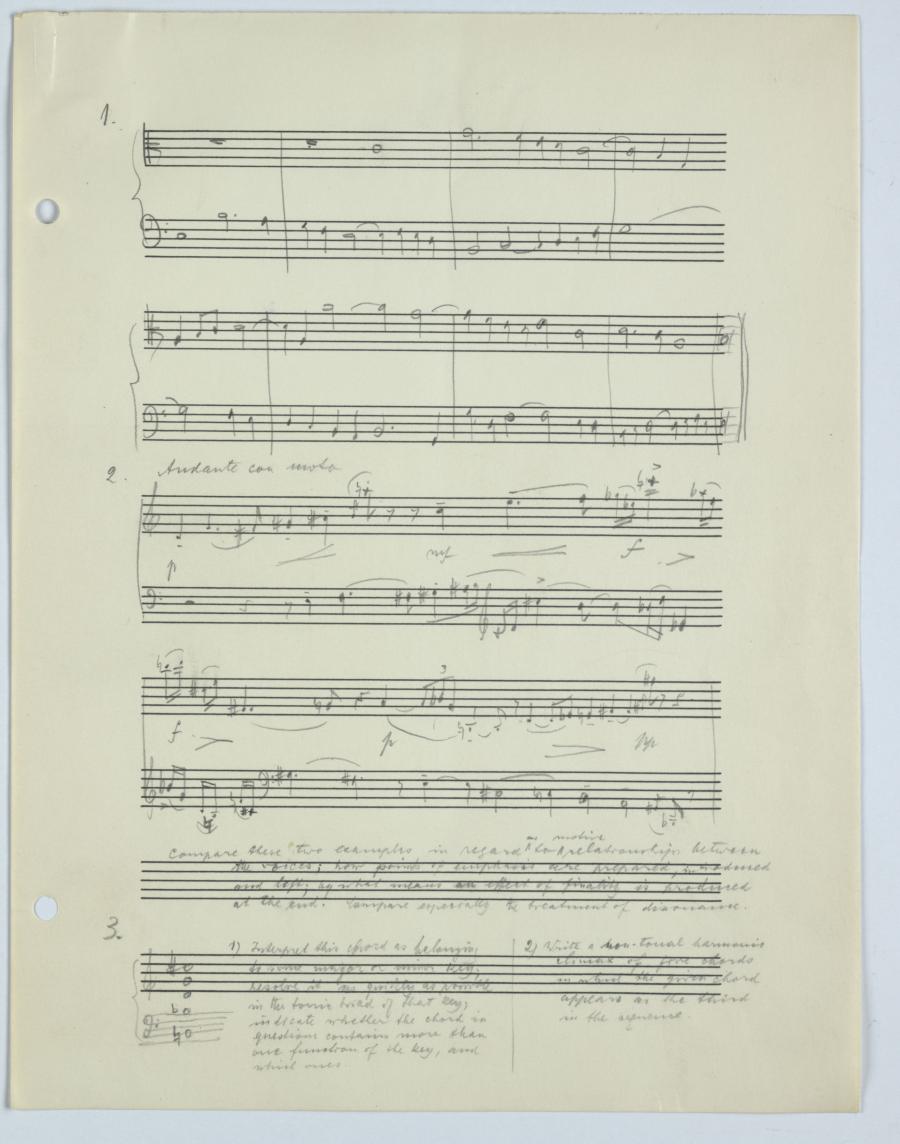[Questionnaire for the final tests and some notes concerning the courses on composition and musical analysis of the academic years 1939-1941]
Abstract
Die ersten Seiten dieses „examinations“-Konvoluts sind tatsächlich Kreneks Planung eines 14wöchigen Harmonielehre-Kurses im Wintersemester 1939/40 am Vassar College. Unterschiedliche funktionsharmonische Akkordbeziehungen beschreibt Krenek anhand von Beispielen aus Schuberts Messe in Es-Dur.
Die Prüfungsunterlagen zu Kreneks Kursen vom Wintersemester 1939 bis zum Wintersemester 1941 illustrieren einen kontinuierlichen Aufbau an musikanalytischen Fähigkeiten, die von Beginn an mit kreativer Anwendung gekoppelt waren und im Kurs „Music 410“ offenbar auch die von Seiten der konservativen College-Leitung nicht geschätzte nicht-tonale Musik umfasste.
OUTLINE
Examples from
Material
Examples
week
no of classesThe remaining dominant dissonances in major and minor - vii-7 and V9 6:14, 7:4
th
7III
7VI
7IV
7II
7
7VI
7IV
7II
7
1 Give an example (not exceeding two measures) in three parts (one of them written
in the alto clef) of each of two of the following idioms:
(a) "borrowed dissonance"
(b) "anticipated dissonance"
(c) "consonant 6/4 chord"¬
2 Is it better to begin a downward motion in a melodic line- (a) with shorter or with longer rhythmic values? (b) on a strong or on a weak beat? Answer both questions and give the reasons for your answer.
II. HARMONY
3 Make the following period unsymmetrical, by extending either the first or the
second phrase by one to two measures, leaving the other phrase unchanged;
1 A composition will be played twice on the gramophone. Write a schematic out- line of the form, going into details as far as possible. (a) Mark the main thematic sections by capital letters, their subordinate constituent ideas by small letters (b) Indicate "transition", "development", and similar functions of the re- spective passages, showing the reference of such passages to the material designated under (a) (c) Give the key scheme of the main sections of the composition
2 The following is the exposition of a Scherzo. Write a development section of that scherzo until the beginning of the recapitulation, of approximately 16 to 20 measures.
3 (a) Criticize briefly each of the following five melodies with respect to their suitability as fugue subjects. (b) Choose one of them which seems to be the most suitable and write answer and countersubject; improve the chosen subject by slight alterations if you feel the need for such changes; in this case formulate the reason for the alterations made.
(1) A composition will be played twice on the gramophone. Write a schematic
outline of the form, going into details as far as possible:
(a) mark the main thematic sections by capital letters, their
subordinate constituent ideas by small letters
(b) indicate "transition", "development" and similar functions
of the respective passages, showing the reference of such
passages to the material designated under (a)
(c) indicate the key scheme of the main sections of the composition
NOTE: For the sake of orientation, indicate in your
outline the changes of the record sides
(2) Discuss in technical terms the function of the principle of development in
the variation form, and of the principle of variation in the developmen-
tal passages of non-variation forms, especially the scherzo form, re-
ferring to and quoting from
(3) Discuss each of the following five melodies with respect to their suitabil- ity as fugue subjects. Choose one of them which seems to be the most suitable and write answer and countersubject; improve the chosen subject by slight alterations if you feel the need for such; in this case formu- late the reasons for the alterations made
Music 410
1. Harmonize the choral example 1.
2. Edit the phrase example 2.
3. Analyze the phrase (ex. 2) as to phrase subdivisions (sections), relationships of the endings of the sections, in regard to interval tensions and interval combinations; observe the points of emphasis and indicate how they are approached and realized.
4. Discuss and compare the principles of articulation and construction applied in examples 1 and 2.
Bach (ErkII, No 173. p.12) Assignment for 410, Jan. 7
a) harmonise the choral 1
b) edit the phrase 2
c) analyse the phrase 2 as to phrase subdivisions (sections)
relationships of the endings of the sections in regard to
interval 1 and 2.
Music 410January 14, 1941
1. Compare examples 1 and 2 a) in regard to motivic relationships between the voices; b) as to how points of emphasis are realized, introduced and left; c) by what means an effect of finality is produced at the end. Consider especially the treatment of dissonances and its function in the design.
2. a) Interpret the chord of example 3 as belonging to some major or minor key and resolve it as quickly as possible in the tonic triad of that key; b) indicate whether the chord in question contains more than one harmonic function of the chosen key and designate these functions; c) write a non-tonal sequence of four three- to five-part chords of a climactic character in which the chord of example 3 appears as the third chord of the sequence.
Compare these two examples in
1) Interpret this chord as belonging to some major or minor key; resolve it as quickly as possible in the tonic triad of that key; indicate whether the chord in questions contains more than one function of the key, and which ones.
2) Write a non-tonal harmonic climax of five chords in which the given chord appears as the third in the sequence.
